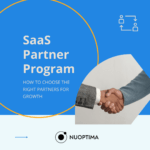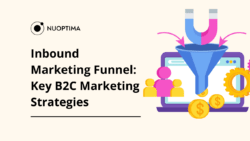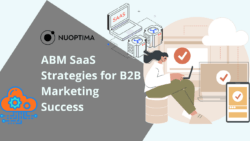Heutzutage wird der erste Eindruck nicht durch einen Handschlag, sondern durch die Benutzererfahrung geprägt. Stellen Sie sich Folgendes vor: Ein neuer Benutzer meldet sich für Ihre Software an, seine Erwartungen sind hoch und sein Interesse ist geweckt. Er ist bereit zu erkunden, was Ihr Tool alles kann, aber wo soll er anfangen? An dieser Stelle kommt die Magie des Onboarding ins Spiel. Als eine wichtige Phase im SaaS-KundenreiseOnboarding ist die Begrüßungsparty für Ihre Benutzer, die sie von neugierigen Neuankömmlingen zu selbstbewussten, engagierten Kunden macht. Es ist nicht nur ein Prozess, es ist eine Kunstform - eine delikate Balance aus Bildung, Engagement und Unterstützung, die den Ton für die gesamte Kundenbeziehung angibt.
In diesem Artikel werden die kritischen Phasen des Onboarding von SaaS (Software as a Service) erläutert, die Strategien, die zum Erfolg führen, untersucht und festgestellt, warum dieser Prozess das Herzstück der Kundenzufriedenheit in der SaaS-Branche ist. Sind Sie bereit, die Expertise von unserem SaaS SEO-Agentur um dauerhafte Beziehungen zu Ihren Nutzern aufzubauen?
Navigieren durch die Nuancen: Die Bedeutung von B2B SaaS Onboarding
Stellen Sie sich vor, Sie haben gerade jemandem ein leistungsfähiges, vielseitiges Werkzeug in die Hand gedrückt. Es strotzt nur so vor Funktionen, aber wo ist das Handbuch? So fühlt sich ein neuer Benutzer, der ein komplexes B2B-SaaS-Produkt ohne angemessenes Onboarding kennenlernt. Hier liegt die erste Herausforderung: Komplexität. B2B-SaaS-Produkte verfügen oft über ein breites Spektrum an Funktionen, die auf verschiedene berufliche Anforderungen zugeschnitten sind und die ohne Anleitung selbst für technisch versierte Personen überwältigend sein können.
Bedenken Sie: Kommunikation. Das einzigartige Wertversprechen Ihres Produkts und dessen Ausrichtung auf die spezifischen Bedürfnisse Ihrer Kunden zum Ausdruck zu bringen, ist keine leichte Aufgabe. Es ist eine weitere häufige Hürde im Onboarding-Prozess, bei dem Klarheit der Schlüssel ist, um Frustrationen in der Anfangsphase zu vermeiden, die die Nutzer zum Ausstieg bewegen könnten.
Doch was verbirgt sich hinter diesen Herausforderungen? Eine Welt voller Vorteile, die durch einen durchdachten, strukturierten Onboarding-Prozess entstehen.
- Benutzerkompetenz. Indem Sie Ihre Kunden Schritt für Schritt anleiten, versetzen Sie sie in die Lage, das volle Potenzial Ihrer Software schnell und effektiv auszuschöpfen. Das ist nicht nur gut für sie, sondern auch für Sie, denn kompetente Benutzer werden eher zu langfristigen, zufriedenen Kunden. Sie kommen in den vollen Genuss der Vorteile Ihrer Software und werden Ihnen wahrscheinlich auch ihr Netzwerk empfehlen.
- Kundenbindung: Die Zahlen sprechen für sich. Studien zeigen, dass ein solider Einführungsprozess zu einer 50% höheren Kundenbindung führen kann. Wenn also gezeigt wird, wie und warum ein Tool verwendet wird, sinkt die Wahrscheinlichkeit, dass sie nach Alternativen suchen, was die Abwanderung verringert.
Wählen Sie die richtige Art von B2B SaaS Onboarding
Der Einführungsprozess einer neuen Software gleicht dem Aufbruch in unbekannte Gewässer. Bei B2B-SaaS ist ein reibungsloser Einstieg für eine dauerhafte Beziehung zu Ihren Kunden von größter Bedeutung. Aber eine Größe passt nicht für alle. Wie wählen Sie also den richtigen Onboarding-Stil für Ihre Kunden? Schauen wir uns die wichtigsten Ansätze an: White Glove, Self-Serve und Hybrid.
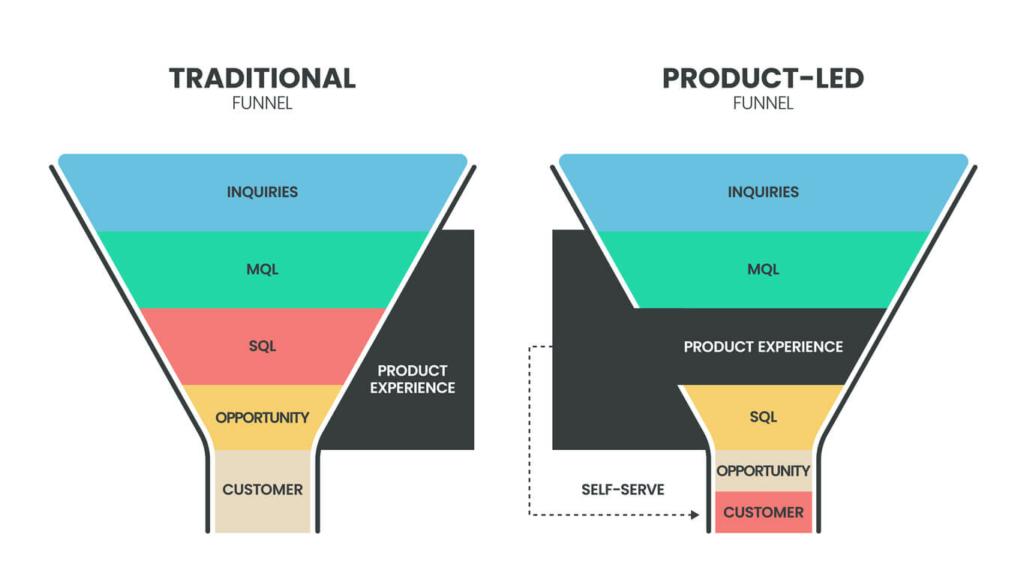
Der weiße Handschuh
Stellen Sie sich vor, Sie haben ein engagiertes Team, dessen einziger Zweck darin besteht, Ihre Kunden Schritt für Schritt durch Ihre Software zu führen, bis sie sicher genug sind, das Schiff selbst zu steuern. Das ist die Essenz des White Glove Onboarding. Sie ist hochgradig individuell und erfordert ein hohes Maß an Unterstützung. Ihr Team richtet die Konten ein, konfiguriert die Einstellungen, schult die Benutzer und bietet reaktionsschnellen Support, wenn Fragen auftauchen. Das ist luxuriös, gründlich und perfekt für Kunden, die Wert auf eine persönliche Note legen. Allerdings läuft nicht alles reibungslos ab, da es ressourcenintensiv sein kann.
Der Selbstbedienungsladen
Willkommen im Zeitalter der Eigenverantwortung! Beim Selbstbedienungsmodell geben Sie Ihren Kunden die Werkzeuge an die Hand, die sie benötigen, um selbst an Bord zu gehen. Es ist das digitale Äquivalent zu einer gut ausgearbeiteten Landkarte und einem stabilen Kompass.
Die Selbstbedienung eignet sich hervorragend für Kunden, die es vorziehen, die Zügel in die Hand zu nehmen und in Ruhe zu erkunden. Sie beansprucht Ihre Ressourcen weniger, erfordert aber ein hervorragendes Benutzererlebnisdesign. Der Nachteil? Einige Kunden, die keine natürlichen Navigatoren sind, könnten sich überfordert fühlen.
Der Hybrid-Ansatz
Die Hybrid-Methode ist der Mittelweg zwischen der Rolle des engagierten Kapitäns und der vollständigen Kontrolle über das Ruder durch den Kunden. Bei dieser Methode wird die sorgfältige Aufmerksamkeit des White Glove mit der Freiheit und Flexibilität der Selbstbedienung kombiniert.
Hier können Sie die Dinge mit einer maßgeschneiderten Schulung oder einem umfassenden Willkommens-Webinar einleiten. Nach der anfänglichen Einrichtung und Orientierung können sich Ihre Kunden frei entfalten, denn sie wissen, dass ein engagiertes Supportteam nur einen Wink mit dem Zaunpfahl entfernt ist. Es handelt sich um eine ausgewogene Option für Kunden, die eine Anleitung zu schätzen wissen, aber auch selbst das Steuer in die Hand nehmen möchten, sobald sie sich wohl fühlen. Es geht darum, den Kurs gemeinsam festzulegen und sie dann losziehen zu lassen, mit der Gewissheit, dass die Hilfe immer bereitsteht.
Dieser Ansatz schafft ein Gleichgewicht zwischen dem Einsatz von Ressourcen und der Unabhängigkeit des Kunden. Auf diese Weise können wir sagen: "Wir begleiten Sie bei jedem Schritt, aber wir vertrauen darauf, dass Sie auch Ihren eigenen Weg gehen können.
Zusammenfassende Tabelle: B2B SaaS Onboarding-Ansätze
| Aspekt | Weißer Handschuh | Selbstbedienung | Hybride |
| Niveau der Unterstützung | Hoch (Engagiertes Team) | Niedrig (benutzergesteuert) | Moderat (Anfangsunterstützung + Selbstbedienung) |
| Intensität der Ressourcen | Hoch | Niedrig | Mäßig |
| Personalisierung | Hochgradig personalisiert | Standardisiert | In gewissem Umfang maßgeschneidert |
| Kosten der Umsetzung | Hoch | Niedrig | Mäßig |
| Unabhängigkeit der Kunden | Niedrig | Hoch | Ausgewogene |
| Skalierbarkeit | Gering (zeit- und personalintensiv) | Hoch | Mäßig |
| Zeit zum Einsteigen | Länger (Hand-Halte-Ansatz) | Schneller (im eigenen Tempo) | Moderat (mit Führung + Selbststudium) |
| Beispiel für einen Anwendungsfall | Hochwertige, komplexe Lösungen | Einfache, intuitiv bedienbare Plattformen | Produkte mit unterschiedlichen Nutzerbedürfnissen/-zielen |
Phasen des B2B SaaS Onboarding
Die Erforschung der vier kritischen Phasen des SaaS-Onboarding-Prozesses ist für die Gestaltung eines nahtlosen und effektiven Benutzererlebnisses unerlässlich, das nicht nur neue Kunden begeistert, sondern auch die Voraussetzungen für eine langfristige Bindung und Erfolg schafft. In der folgenden Tabelle sind die wichtigsten Phasen aufgeführt, die Sie bei der Gestaltung dieser entscheidenden Konversionsphase berücksichtigen müssen:
| Phase | Beschreibung | Wichtigste Aktivitäten | Erwartetes Ergebnis |
| Willkommen und Anmeldung | Vermittelt einen positiven ersten Eindruck und führt neue Benutzer durch die Kontoerstellung | Begrüßungs-E-Mail/Nachricht, Design des Anmeldeformulars, Kontoerstellung/Überprüfung, Willkommensbildschirm | Ein registrierter Nutzer mit einem verifizierten Konto, der einen positiven ersten Eindruck von dem Dienst hat |
| Orientierung und Bildung | Bietet eine Führung durch die wichtigsten Funktionen der Software | Produkttour/Walkthrough, Schulungsinhalte (Videos, Artikel, Webinare), Erklärung der Benutzeroberfläche | Ein Benutzer, der die grundlegenden Funktionen der Software versteht und weiß, wie man sich auf der Plattform bewegt |
| Engagement und Adoption | Ermutigt die Benutzer, sich auf die Software einzulassen und sie aktiv zu nutzen | Aufgabenaufforderung (z. B. "Vervollständigen Sie Ihr Profil"), Zielsetzung und Verfolgung, Ermutigung zur Erkundung von Funktionen | Ein Nutzer, der die Software aktiv nutzt, sich mit ihren Funktionen auseinandersetzt und sich zu einem regelmäßigen Nutzer entwickelt |
| Feedback und Unterstützung | Sammelt Erkenntnisse über die Nutzer und fungiert als Nachsorge, um die Nutzer auf ihrer Reise mit Ihrer Software zu betreuen | Umfragen und Feedback-Formulare, Kundensupport-Kanäle, Überwachung des Nutzerverhaltens, Follow-up-E-Mails | Ein Nutzer, der sich unterstützt und gehört fühlt, wird eher zu einem treuen Kunden und gibt wertvolles Feedback |
Best Practices für die Gestaltung eines effektiven Onboarding-Prozesses
Die Gestaltung eines effektiven Onboarding-Prozesses erfordert sorgfältige Planung und Überlegung. Hier sind einige bewährte Verfahren, die Sie beachten sollten:
1. Personalisierung ist das A und O beim B2B-SaaS-Onboarding
Ihre Kunden als einzigartige Individuen zu behandeln und nicht als Einheitsgröße, kann Ihre Geheimwaffe sein. Es geht jedoch um mehr als nur das Hinzufügen eines Vornamens in einer E-Mail. Es geht darum, Ihre Kunden wirklich zu verstehen und das Onboarding-Erlebnis so zu gestalten, dass es ihren Bedürfnissen entspricht. Hier erfahren Sie, wie Sie diese persönliche Note in die Realität umsetzen können:
Klare Ziele setzen
Definieren Sie zuallererst, wie ein erfolgreicher Onboarding-Prozess aussehen soll für Ihren Kunden. Fragen Sie sich, was sie mit Ihrer Software zu erreichen hoffen? Ist es eine optimierte Kommunikation, ein besseres Projektmanagement oder eine Datenanalyse? Wenn Sie diese klaren Ziele festlegen, können Sie Ihr Onboarding-Erlebnis so gestalten, dass jeder Schritt auf die gewünschten Ergebnisse Ihres Kunden abgestimmt ist.
Maßgeschneiderte Unterstützung anbieten
Stellen Sie sich vor, Sie haben eine Frage und bekommen eine Antwort, die genau auf Sie zugeschnitten ist. Das ist die Magie des maßgeschneiderten Supports. Ob per Live-Chat, E-Mail oder durch engagierte Kundenerfolgsmanager: Bieten Sie Wege an, auf denen Kunden Fragen stellen und Unterstützung erhalten können, wenn sie sie am dringendsten benötigen.
Kennen Sie Ihre Kunden: Segmentieren Sie Ihr Publikum
Um diesen Schritt richtig durchzuführen, müssen Sie muss Ihre Kunden in- und auswendig kennen. Was sind ihre Aufgaben? In welchen Branchen sind sie tätig? Nutzen Sie Kundendaten, um Ihre Zielgruppe zu segmentieren und die Onboarding-Reise auf der Grundlage dieser Erkenntnisse anzupassen. Das bedeutet, dass ein Marketingmanager im Gesundheitswesen eine andere Erfahrung macht als ein Datenanalyst im Einzelhandel. Sie erhalten Informationen, die nicht nur allgemeiner Natur sind, sondern sich direkt auf ihre Aufgaben und Bedürfnisse beziehen, so dass sich die Einführungsphase anfühlt, als wäre sie nur für sie gemacht.
Mit Absicht kommunizieren
Nutzen Sie die E-Mail-Automatisierung oder die In-App-Benachrichtigung, um Ihren Kunden in den verschiedenen Phasen ihrer Einführungsphase einzigartige Hinweise zu senden. Dabei handelt es sich nicht nur um "Hallo"- und "Danke"-Nachrichten, sondern um aktuelle Tipps, Best Practices und zusätzliche Ressourcen, die den Kunden helfen sollen, den größten Nutzen aus Ihrem Produkt zu ziehen.
Im Wesentlichen geht es bei der Personalisierung im B2B-SaaS-Onboarding darum, zu zeigen, dass Sie siehe Ihre Kunden - ihre Herausforderungen, Ziele und besonderen Umstände - und dass sich Ihre Plattform von Anfang an für ihren Erfolg einsetzt. Das ist nicht nur eine gute Praxis, sondern die Grundlage für dauerhafte und fruchtbare Beziehungen.
2. Benutzerschulung und Training für komplexes B2B SaaS Onboarding
Software-Schulungen und -Trainings sind für Ihr B2B-SaaS-Onboarding unerlässlich. Indem Sie Ihren Kunden umsetzbare Tipps und Fähigkeiten zur effektiven Nutzung des Produkts vermitteln, erhöhen Sie die Kundenzufriedenheit und verringern das Risiko der Abwanderung. Daher finden Sie hier einige Möglichkeiten, wie Sie Ihr Publikum schulen können:
- Video-Tutorials,
- Webinare,
- Blogbeiträge,
- Intuitive Benutzeroberflächen,
- Wissensdatenbanken,
- FAQs,
- Gemeinschaftsforen.
- Interaktive Führer.
Diese Ressourcen sollten sowohl die Grundlagen der Nutzung des Produkts als auch fortgeschrittene Merkmale und Funktionalitäten abdecken. Indem Sie verschiedene Schulungsoptionen anbieten, machen Sie den Prozess leicht zugänglich und gehen auf unterschiedliche Lernstile ein. Es hilft auch, den Einführungsprozess in überschaubare Schritte zu unterteilen. Da B2B-SaaS-Produkte komplex sein können, ermöglichen diese Ressourcen den Kunden, in ihrem eigenen Tempo zu lernen und Fortschritte zu machen.
Darüber hinaus sollten Unternehmen kontinuierliche Unterstützung anbieten, wie z. B. regelmäßige Treffen mit einem Kundenerfolgsmanager, Zugang zu einer Wissensdatenbank oder einem Community-Forum oder zusätzliche Schulungs- oder Zertifizierungsmöglichkeiten. Durch die Bereitstellung kontinuierlicher Lernmöglichkeiten können Unternehmen sicherstellen, dass die Kunden mit dem Produkt beschäftigt bleiben und im Laufe der Zeit weiterhin einen Nutzen daraus ziehen.
3. Multi-Channel-Onboarding
Eine mehrkanalige Onboarding-Strategie stellt sicher, dass Ihr Produkt in den Köpfen der Nutzer präsent bleibt, insbesondere während einer kostenlosen Testphase, und steigert so Engagement und Konversionsraten. Sie sollten eine regelmäßige, ansprechende Kommunikation über verschiedene Kanäle entwickeln, z. B. gezielte E-MailsDies kann beispielsweise eine einfache E-Mail sein, in der die Nutzer aufgefordert werden, eine bestimmte Funktion zu entdecken, die sie noch nicht genutzt haben.
Hier sind einige externe Berührungspunkte zu berücksichtigen:
- Willkommensnachricht: Heißen Sie die Nutzer nach der Anmeldung herzlich willkommen und führen Sie sie zu einer Schnellstart-Anleitung.
- Fortschrittskontrollen: Erkundigen Sie sich in der Mitte der Testphase oder nach der Anmeldung nach ihren Erfahrungen und ob sie Unterstützung benötigen.
- Erinnerung an das Ende der Probezeit: Wenn die Testphase endet, ermutigen Sie sie, ein Abonnement abzuschließen, und betonen Sie die Vorteile einer Fortsetzung.
Damit das Multi-Channel-Marketing in Ihrem Onboarding-System funktioniert, ist eine Automatisierung unerlässlich. Sie spart nicht nur Zeit und reduziert Fehler, sondern erleichtert auch die Skalierung dieses Prozesses, wenn Sie wachsen. Wenn Sie E-Mails automatisieren, achten Sie darauf, dass die Nachrichten menschlich wirken, z. B. indem Sie den Benutzer mit seinem Namen ansprechen und sich auf seinen speziellen Anwendungsfall beziehen.
4. Onboarding endet nicht mit der Anmeldung der Benutzer
Denken Sie daran, dass der Onboarding-Prozess nicht mit einer kostenlosen Testversion endet. Nachdem ein Benutzer von einer kostenlosen auf eine kostenpflichtige Version Ihrer Software umgestiegen ist, sollte er weiterhin Unterstützung und Anleitung erhalten. Auch wenn die Häufigkeit abnimmt, ist es von entscheidender Bedeutung, dass Sie sie weiterhin mit praktischer Hilfe und hervorragendem Kundenservice betreuen. Indem Sie dem Kundendienst Vorrang einräumen, zeigen Sie Ihren bestehenden Kunden, dass Sie ihre Investition zu schätzen wissen, und verbessern so die Markentreue, die Kundenzufriedenheit und die Chance auf Weiterempfehlungen.
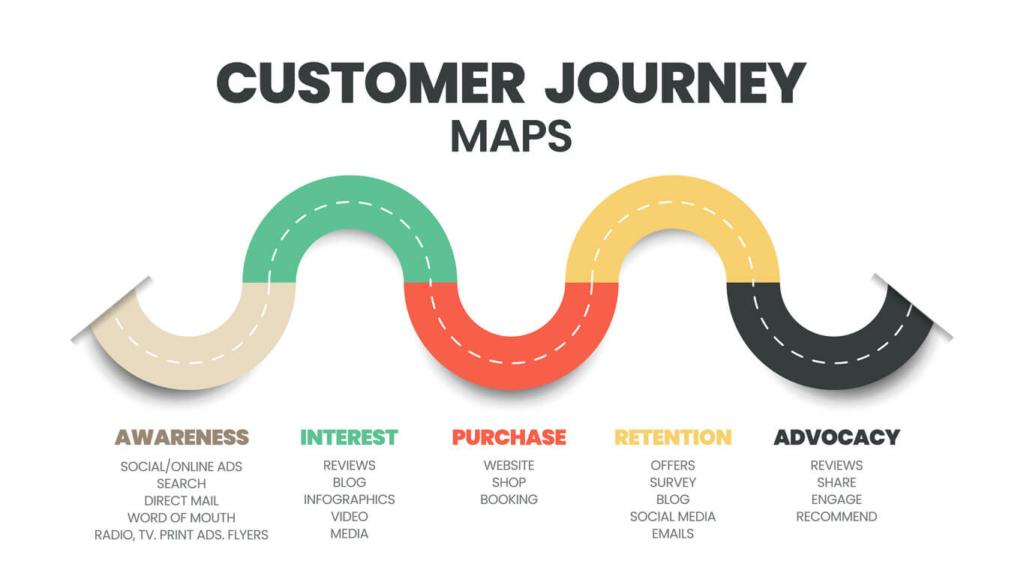
5. Messung des Onboarding-Erfolgs: Zu verfolgende Schlüsselmetriken
Um den Erfolg des Onboarding-Prozesses zu messen, sollten Unternehmen mehrere Schlüsselkennzahlen verfolgen:
- Zeit-zu-Wert: Damit lässt sich die Zeit messen, die ein Benutzer benötigt, um einen Nutzen aus dem Produkt zu ziehen. Eine kürzere Time-to-Value deutet beispielsweise auf einen erfolgreicheren Onboarding-Prozess hin. Durch die Analyse dieser Kennzahl können Unternehmen Engpässe oder Reibungspunkte im Onboarding-Prozess identifizieren und Maßnahmen zu deren Optimierung ergreifen.
- Engagement der Nutzer: Diese Kennzahl misst, wie aktiv die Kunden das Produkt während der Einführungsphase nutzen. Ein hohes Nutzerengagement deutet darauf hin, dass die Kunden das Produkt nützlich finden und wahrscheinlich weiterhin ein Abonnement abschließen werden. Durch die Überwachung des Nutzerengagements können Unternehmen abwanderungsgefährdete Kunden identifizieren und proaktive Maßnahmen ergreifen, um ihre Bedürfnisse zu erfüllen.
- Kundenzufriedenheit: Diese Kennzahl misst die Zufriedenheit der Kunden mit dem Onboarding-Prozess. Sie kann durch Umfragen, NPS-Werte oder Kundenfeedback gemessen werden. Eine hohe Kundenzufriedenheit deutet auf ein erfolgreiches Onboarding-Erlebnis hin.
- Abwanderungsrate: Der Prozentsatz der Kunden, die ihr Abonnement kündigen oder die Nutzung des Produkts nach dem Onboarding-Prozess einstellen. Eine niedrige Abwanderungsrate deutet auf einen erfolgreichen Onboarding-Prozess hin, während eine hohe Abwanderungsrate darauf hindeuten kann, dass Änderungen vorgenommen werden müssen.
Durch die Verfolgung dieser Metriken können Unternehmen Einblicke in die Effektivität ihres Onboarding-Prozesses gewinnen und datengestützte Entscheidungen zu dessen Optimierung treffen.
Die Rolle des Kundenfeedbacks bei der Onboarding-Optimierung
Durch Kundenfeedback wird der Onboarding-Prozess optimiert, so dass jeder Schritt einen Mehrwert bietet und Vertrauen schafft. Es gibt zahlreiche Möglichkeiten, Kundenfeedback während des Onboarding-Prozesses zu sammeln:
- Erhebungen,
- Interviews,
- Benutzer-Testsitzungen.
Diese Medien können wertvolle Einblicke in das Kundenerlebnis liefern und Reibungspunkte oder Unklarheiten aufzeigen. Unternehmen können auch In-App-Feedback-Tools oder Chatbots nutzen, um Kundenfeedback in Echtzeit zu sammeln, während sie durch das Produkt navigieren.
Sobald das Feedback gesammelt ist, sollten die Unternehmen es analysieren, um gemeinsame Themen oder Muster zu erkennen. Dies kann dabei helfen, verbesserungsbedürftige Bereiche zu priorisieren und die Gestaltung iterativer Änderungen am Onboarding-Prozess zu steuern. Durch die Einbeziehung der Kunden in die Optimierung können Unternehmen sicherstellen, dass das Onboarding-Erlebnis ihren Bedürfnissen und Erwartungen entspricht.
Beispiele für exzellentes Onboarding
Es gibt zahlreiche Beispiele für großartige Onboarding-Erfahrungen. Zum Beispiel Hubspotzum Beispiel. Wenn sich ein neuer Benutzer für seine CRM-Software registriert, hat er die Möglichkeit, eine kostenlose Premium-Demonstration zu nutzen oder mit der Sammlung kostenloser Dienstprogramme von Hubspot zu beginnen. Die Selbstsegmentierung ist die wichtigste Design-Entscheidung zu Beginn dieses Onboarding-Erlebnisses, da sich die Leads in zwei Kategorien aufteilen. Während des Fragebogens werden sie dann weiter segmentiert, indem sie der Plattform mitteilen, ob sie ein Konto für eine Einzelperson oder für ein Team einrichten möchten.
Diese schnellen Angaben helfen dabei, das Konto von Anfang an zu personalisieren und ermöglichen es den Vermarktern hinter den Kulissen, die Nachrichten auf die Umstände des Nutzers abzustimmen. Diese Taktik macht das Erlebnis relevanter und nützlicher und erhöht so die Zufriedenheit mit der Plattform.

Ein weiteres gutes Beispiel ist die Aufgabenmanagement-Plattform, Asana. In der frühen Anmeldephase werden die Nutzer aufgefordert, ihr Hauptziel bei der Nutzung der Plattform anzugeben. Anhand dieser Informationen kann Asana seine Zielgruppe segmentieren und seine Nachrichten auf dieses spezifische Ziel zuschneiden.
Um die Erfahrung auf die nächste Stufe zu heben, führt die Plattform den Nutzer durch ein interaktives Tutorial, das ihm zeigt, wie er sein erstes Projekt einrichten kann.

Wie Sie sehen, hängt die Gestaltung Ihrer B2B-SaaS-Onboarding-Strategie von Ihrer Zielgruppe und dem angestrebten Ergebnis ab. Nichtsdestotrotz sind einige Dinge nach wie vor von entscheidender Bedeutung, wie z. B. die Notwendigkeit der Segmentierung, der Personalisierung und der kontinuierlichen Unterstützung.
Um weitere Einblicke in ROI-Strategien zu erhalten, hören Sie sich ein interessantes Gespräch in der Nuoptima SaaS Podcast mit Deepak Prabhakara von BoxyHQ.
Schlussfolgerung: Die Zukunft von B2B SaaS Onboarding und Kundenbindung
Wie Sie bereits festgestellt haben, spielt das Onboarding von B2B-SaaS eine entscheidende Rolle bei der Kundenbindung. Indem sie sie durch die anfängliche Einrichtung und Schulung führen, können Unternehmen den Nutzern helfen, den Wert des Produkts zu erkennen und ihre Chancen auf langfristigen Erfolg zu erhöhen.
Auch wenn die SaaS-Branche in der Regel einen Selbstbedienungsplan bevorzugt, sollten Sie eine B2B-SaaS-Onboarding-Strategie entwickeln, die auf Ihren Kundenstamm abgestimmt ist. Sie könnten zum Beispiel den Wert eines engagierten Kundendienstteams in Betracht ziehen, um Zweifel oder Fragen schnell zu klären. Unabhängig davon, welche Methode Sie wählen, ist die Entwicklung eines nahtlosen Übergangs von einer kostenlosen Testversion zu einem kostenpflichtigen Abonnementplan von entscheidender Bedeutung.
Wenn Sie Schwierigkeiten haben, qualifizierte Leads für Ihr B2B SaaS-Produkt zu gewinnen, sollten Sie sich mit folgenden Personen treffen NUOPTIMAunsere Wachstumsagentur und eine kompetente SaaS-Beratungsagentur. Unsere Wachstumsagentur weiß, wie wichtig eine gezielte Strategie ist, die Ihnen hilft, einen nachhaltigen und vorhersehbaren Einkommensstrom aufzubauen. Buchen Sie noch heute einen kostenlosen Anruf und unterhalten Sie sich mit unseren internen Experten darüber, wie Sie kaufbereite Verbraucher für Ihr Produkt gewinnen können.
FAQ
Der SaaS-Onboarding-Prozess läuft in vier Hauptphasen ab. Die erste Phase, die Willkommens- und Anmeldephase, vermittelt einen positiven ersten Eindruck und führt neue Benutzer durch die Kontoerstellung. Die nächste Phase, Orientierung und Schulung, bietet eine Führung durch die wichtigsten Funktionen der Software. Anschließend ermutigt die Phase Engagement und Adoption die Benutzer, die Software aktiv zu nutzen. In der Feedback- und Supportphase schließlich werden die Erkenntnisse der Nutzer gesammelt, um sie auf ihrer Reise mit Ihrer Software zu begleiten.
Eine SaaS-Onboarding-Strategie ist ein strukturierter Plan, der neue Benutzer von der Anmeldung bis zu treuen Kunden führt. Sie beginnt mit der Festlegung klarer Ziele, der Segmentierung der Nutzer und der Anpassung der Erfahrung an ihre Bedürfnisse. Sie können auch Tutorials einbinden und die Benutzer mit ansprechenden Inhalten schulen.
Das Onboarding ist bei SaaS aus mehreren zwingenden Gründen wichtig. Sie gibt den ersten Ton an, denn der erste Eindruck ist sehr wichtig. Ein effektives Onboarding fördert die Benutzerbindung, da die Benutzer schnell den Wert der Software erkennen und die Abwanderung verringern. Darüber hinaus verbessert ein reibungsloses Onboarding die Kundenerfahrung, hilft ihnen, das Beste aus Ihrem Service herauszuholen und erhöht die Wahrscheinlichkeit von Weiterempfehlungen.
